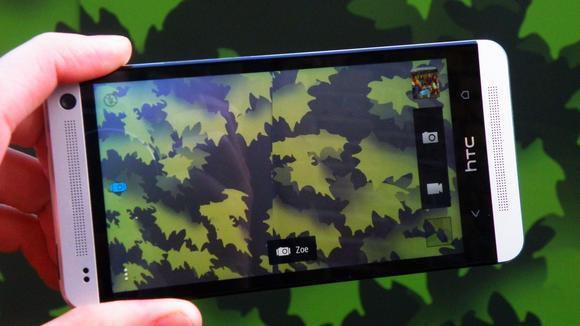
HTC has always been one of my favorite manufacturers. I really couldn’t tell you why now, because it’s been so long since I’ve even seen one of the devices in the wild, but it started with the HTC Startrek. The name stood out to me for the obvious reasons, but for whatever reason I just loved using that phone back then. I was actually a fan of Windows Mobile (but not for very long), which basically translates to that I didn’t completely hate it. Of course, the phone I got to use didn’t actually have a cool name (Cingular’s 3125), but I pretended it did anyway.
Since then, I’ve been a fan. And HTC is one of those companies that just continued to surprise me, throughout the years, with really awesome devices. No, not every handset they have launched has been a smash-hit, but the successes are definitely worth committing to memory. I’ll probably never forget the original Hero, for example. The DROID Incredible is another one.
HTC may have been slumping when the original One — later rebranded as the One (M7) — launched, but let’s face it: it turned things around for the company. In fact, now that the company has just divulged their Q3 2014 results, and indicated a profit, it’s looking even brighter for the company. Certainly more than it has recently. The One (M7) kicked things off, and HTC continued that success into the One (M8).
HTC also carried over a few other things, too.
One of the bullet points for the One (M7) was the UltraPixel camera on the back. HTC wanted to tell the world that megapixels matter, but not just because companies shove a lot of them into one piece of hardware (not that that’s a bad thing, Nokia — at all). As a result, the UltraPixel was the result, but it didn’t have as big of an impact as HTC probably would have liked.
That mostly had to do with the fact that the other manufacturers, from Nokia to Samsung, just ignored this effort from HTC and continued business as usual. Apple, to give them appropriate credit, has continued to ignore the “pack megapixels in,” too, but that’s where a big key difference lies.
Apple has continued to push for their cameras to be the best options for anyone who is looking for the best camera in a smartphone — and doesn’t want the camera to be the only selling factor. It’s been a common factor in many iPhone reviews that the camera in them is the best “all around” camera, even if it hasn’t shoved in all of the megapixels to achieve it.
I still feel like this is what HTC was going for, to show that they could come up with a camera that matched this sort of praise, but obviously dropping the veil on needing so many megapixels. That didn’t happen the first time around, and while the One (M8) earned plenty of praise just as its predecessor did, the camera took several knocks.
HTC’s UltraPixel effort was valiant, and they deserve a lot of credit for trying to buck the trend in the way that they did. They gave it a shot, but with two devices in a row now, one could say that the experiment has come to an end. That, moving forward, HTC could focus on the camera’s quality, but not utilizing the UltraPixel idea.
That isn’t to say that they need to shove all the megapixels in, either. If Apple can create one of the best cameras in a smartphone to date with an 8-megapixel shooter, then it isn’t impossible. And perhaps HTC is already planning on doing this, as rumors of their pair of “Eye” devices continue to swirl ahead of an October 8 reveal. With a handset that’s rumored to have a 13-megapixel front-facing camera, and another 13MP camera on the back, maybe HTC will start taking from their Desire lineup when it comes to cameras, rather than the UltraPixel stemmed from the One brand.
Or, maybe they’ll just make the next One (M9?) have a ridiculously impressive UltraPixel camera, and the wait will be more than worth it. Part of the fun is the excitement stemmed from waiting, right?